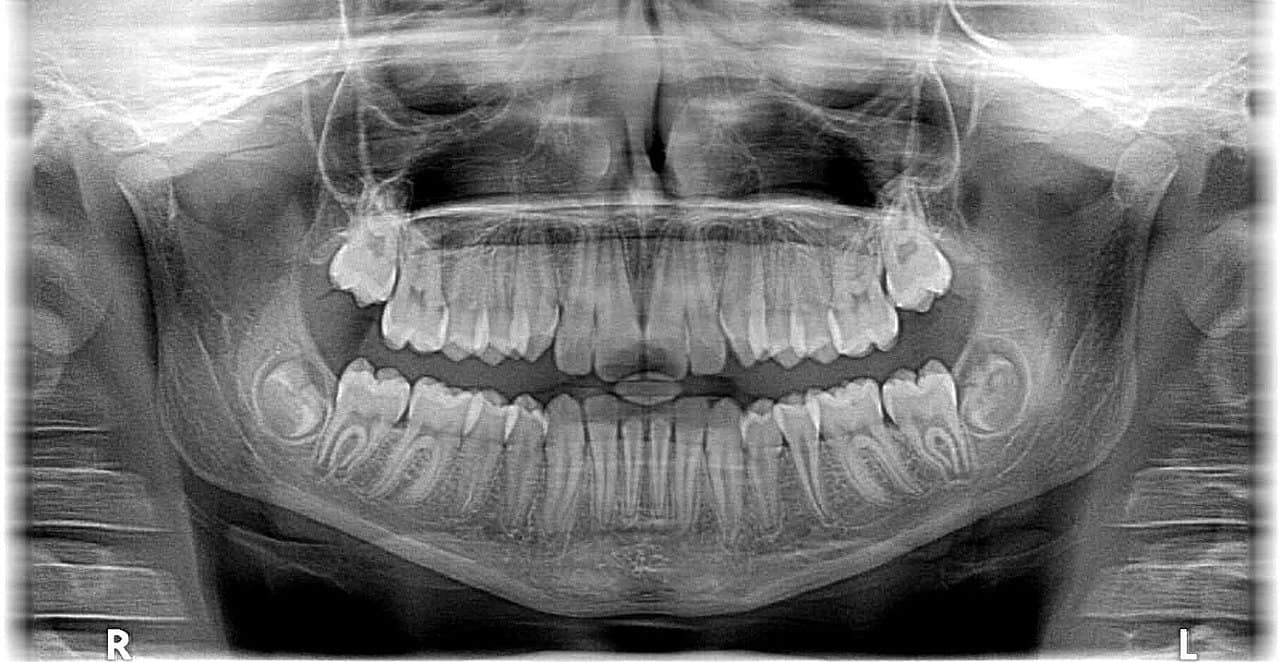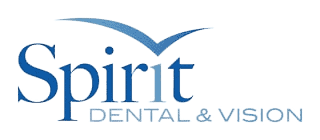The Best Dental Plans With Vision for Seniors in 2025

According to the CDC, 96% of seniors have had cavities, 20% have untreated tooth decay, and 68% have gum disease.1 Problems with vision are also common, with the CDC reporting that cases of early age-related macular degeneration are going to double by 2050.2
One major factor? Original Medicare covers neither routine dental nor vision care, causing many older adults to skip this essential care altogether. Finding dental and vision insurance is crucial, and it’s both convenient and cost-effective to get both types of coverage from the same provider.
We’ve researched the top dental and vision insurance bundles to find the best options for seniors. We’ll compare their coverage, costs, and network availability to help you choose the right provider.
Don’t need vision insurance? Then read our rundown of this year’s best dental insurance plans for seniors.
The Best Dental and Vision Plans for Seniors
- Spirit Dental : Best Overall
- Humana Dental : Lowest Premiums
- Aetna Dental : Best With Free Exams
- Cigna Dental : Best With a Hearing Option
- Delta Dental : Best for Frames
- UnitedHealthcare Dental : Best for Contacts and Glasses
Dental and Vision Plans Compared
| Provider | Vision Annual Max | Dental Annual Max | Maximum Waiting Period | Monthly Premium for Basic Coverage* |
|---|---|---|---|---|
| Spirit Dental | None | $5,000 (year 3) | None | $21.54 |
| Humana | None | $1,500 | 12 months | $19.99 |
| Aetna | $1,250 | $1,250 | 12 months | $46.41 |
| Cigna | $150-$400 | $1,000-$2,500 | 12 months | $38.75 |
| Delta | Varies by plan | $2,000 | 12 months | $46.37 |
| UnitedHealthcare | None | $2,000 | 6 months | $70.38 |
*Premium estimates for a 65-year-old woman in California
1. Spirit Dental - Best Overall

What We Like Most:
- Six dental plans to choose from
- No waiting periods
- Can use out-of-network providers
- $7 per month vision insurance

Overview
Spirit offers comprehensive vision and dental insurance, with six dental plans to choose from. The vision add-on makes eyeglasses, contacts, and exams affordable, and you can use out-of-network providers without losing all your benefits.
Spirit Plans for Seniors
| Plan | Monthly Cost | Annual Max | Preventive Coinsurance | Basic Coinsurance | Major Coinsurance |
|---|---|---|---|---|---|
| Preventive Plus PPO | $21.54 | $750 | 0% | 50% | 80% |
| Core PPO | $36.60 | $1,200 | 0% | 50% | 75% |
| Flex | $39.15 | $1,000 | 0% | 55% | 25% |
| Preferred PPO | $44.15 | $1,500 | 0% | 65% | 20% |
| Pinnacle PPO | $47.89 | $1,200 | 0% | 50% | 25% |
| Flex Plus | $52.40 | $1,800 | 0% | 60% | 30% |
Vision Add-On Coverage: For $7 monthly, you get exams with $10 deductible, frames with $50 deductible and $65 allowance, lenses with $50 deductible ranging from $40-$100, and contacts with $100 allowance.
Coverage and Restrictions: Spirit covers dental implants and hearing health benefits, which are rare features in dental insurance. All plans cover preventive care at 100% (0% coinsurance), meaning you pay nothing for cleanings and exams. Your dental coverage increases each year you stay enrolled. For vision, you can only get new frames once every 24 months.
Waiting Periods: Spirit has no waiting periods for either dental or vision insurance, which means you can get care right after you pay your first premium.
Unique for Seniors: The Flex plans allow you to see any dentist anywhere without network restrictions. The PPO plans give you in-network savings of 25%-50% but still let you use out-of-network providers. This flexibility means you can keep your longtime dentist regardless of which plan you choose.
Our Take: Spirit is perfect for seniors who value flexibility and don’t want to change dentists. The immediate coverage and implant benefits make it our top choice, though you will have to keep your policy for a couple of years to get the full benefits.
Pros
- No waiting periods for any treatment
- Use any dentist anywhere
- Implant coverage included
- Coverage improves over time
Cons
- Not available in Rhode Island
- Can only get new frames once every 24 months
2. Humana Dental - Lowest Premiums

What We Like Most:
- Dental and vision coverage from $22 per month
- Can add hearing insurance
- Lower copays with PLUS network providers
- 15% off LASIK or PRK procedures

Overview
Humana offers some of the lowest prices for combined dental and vision coverage. With their special PLUS network, you’ll find better deals like $0 copays on exams and frames with allowances up to $250 on frames and $200 on contacts.
>> Read more: Humana Dental Insurance Review
Humana Plans for Seniors
| Plan | Monthly Cost | Annual Max | Preventive Coinsurance | Basic Coinsurance | Major Coinsurance |
|---|---|---|---|---|---|
| Preventive Value | $19.99 | Unlimited | 0% | 50% | Not covered |
| Bright Plus for Veterans | $28.71 | $1,250 | 0% | 40% | Not covered |
| Bright Plus | $28.71 | $1,250 | 0% | 40% | Not covered |
| Loyalty Plus | $39.99 | $1,000-$1,500* | 0% | 40%-70%* | 80%-50%* |
| Complete Dental | $54.99 | $1,250-$1,500* | 0% | 20% | 50% |
*Coinsurance decreases (gets better) each year
Vision Coverage: Humana’s PLUS network providers offer $0 copay for exams, $0 copay with $250 allowance for frames, and $200 allowance for contacts. Regular in-network providers have $10 copay for exams and slightly lower allowances.
Coverage and Restrictions: All dental plans cover preventive care at 100% (0% coinsurance). The Preventive Value plan offers unlimited coverage for basic procedures, which is rare in dental insurance. Vision coverage includes both regular in-network and PLUS network options, with PLUS providers offering better deals. Additionally, with vision coverage, you can only get either frames or contacts per year, not both.
Waiting Periods: Humana has no waiting periods for vision appointments. For dental care, you’ll wait 30 days for basic services with most plans and 12 months for major services with Complete Dental. However, Loyalty Plus has no waiting periods whatsoever.
Unique for Seniors: Humana offers a Veterans-specific plan and has a massive network of 335,000+ providers. Their search tool filters for wheelchair accessibility and other senior needs. Some plans include up to $100 yearly for teeth whitening.
Our Take: Humana excels for seniors who need extensive dental work because it offers unlimited coverage options on some plans. The loyalty rewards are generous, but plan structures can be complex and confusing to navigate.
Pros
- $0 copay for exams and frames in PLUS network
- Unlimited dental coverage on some plans
- Veterans-specific options
- Huge provider network
Cons
- Can only get frames or contacts per year, not both
- Waiting periods on some plans
3. Aetna Dental - Best With Free Exams

What We Like Most:
- Free vision exams
- Up to 40% off additional pairs of prescription glasses
- Discounts on hearing aids
- Preventative dental care is free

Overview
Aetna’s vision and dental offerings include no deductibles and $0 exams. You’ll have three dental plans to choose from, one vision plan costing roughly $12 per month, and no waiting periods if you’ve had prior dental coverage.
>>Read more: Aetna Dental Insurance Review
Aetna Plans for Seniors
| Plan | Monthly Cost | Annual Max | Preventive Coinsurance | Basic Coinsurance | Major Coinsurance |
|---|---|---|---|---|---|
| Direct Preferred PPO | $53.09 | $1,250 | 0% | 20% | 50% |
| Direct Core PPO | $46.41 | $1,000 | 0% | 50% | 50% |
| Direct Preventive PPO | $20.80 | No maximum | 0% | Not covered | Not covered |
Vision Preferred Plan: Aetna’s vision plan includes $0 deductible and free exams, $130 allowance for frames plus 20% off excess amounts, $25 copay for standard lenses, and $130 allowance for contacts with 15% off excess amounts.
Coverage and Restrictions: Both main dental plans cover preventive care at 100% (0% coinsurance) in-network. The vision plan is comprehensive with no deductible, but you can only get glasses or contacts per 12-month period, not both. Aetna doesn’t cover dental implants, cosmetic work, or orthodontics.
Waiting Periods: Aetna has no waiting periods for vision care. For dental care, there are no waiting periods if you’ve had dental insurance within 90 days. Otherwise, you’ll wait one month for basic procedures and up to 12 months for major work.
Unique for Seniors: Aetna offers some our top-rated Medicare Advantage plans, which allow you to bundle your Medicare coverage with dental and vision benefits.
>>Read more: Aetna Medicare Advantage Review
Our Take: Aetna works best for seniors who are transitioning from employer coverage and want simple, predictable plans. Their Medicare Advantage plans offer valuable benefits, but the lack of implant coverage and high out-of-network costs are significant drawbacks.
Pros
- $0 vision deductible
- Free vision exams
- No-cost preventive dental care
- Easy online appointment scheduling
Cons
- Can only get glasses or contacts per period, not both
- Not available in several states
4. Cigna Dental - Best With a Hearing Option

What We Like Most:
- Can bundle dental, vision, and hearing insurance
- Preventative dental care has no coinsurance
- You pay only 30% for basic dental care after deductible
- Only $38.75 for vision and dental coverage
Overview
Want to combine vision, hearing, and dental insurance under one provider? Cigna offers three different bundle options. With no waiting periods on vision and some dental plans plus $0 deductibles on vision, you can choose from in-network or out-of-network providers.
>> Further reading: Cigna Dental Insurance Review
Cigna Plans for Seniors
| Plan | Monthly Cost | Dental Max | Vision Max | Dental Basic Coinsurance | Vision Benefits |
|---|---|---|---|---|---|
| Dental Vision 1000 | $38.75 | $1,000 | $150 | 30% after deductible | $100 allowance |
| Dental Vision Hearing 2000 | $51.00 | $1,500 | $275 | 30% after deductible | $200 allowance |
| Dental Vision Hearing 3500 | $63.00 | $2,500 | $400 | 20% after deductible | $300 allowance |
Coverage and Restrictions: All plans cover preventive dental care at 100% (0% coinsurance). Vision coverage varies by plan and includes copays for exams ranging from 50% to 10% coinsurance depending on the plan. The basic dental and vision plan doesn’t cover major dental procedures. Hearing benefits include allowances for hearing aids and discounts on devices.
Waiting Periods: Cigna has no waiting periods for vision insurance. Dental waiting periods depend on your plan. Some have no waiting periods, while others require six to 12 months for basic and major procedures.
Unique for Seniors: Cigna’s “Brighter Score” rates dentists on cost and patient satisfaction, helping you choose providers based on real patient feedback. You get the same coverage whether you go in-network or out-of-network, which eliminates confusion about whether your longtime dentist is covered.
Our Take: Cigna is perfect for budget-conscious seniors who want to bundle all three types of coverage under one provider. The affordable pricing and no network restrictions are great features, but the vision annual maximums are quite low on basic plans.
Pros
- Dental, hearing, and vision insurance available
- Same in-network and out-of-network coverage
- Dentist rating system
- 24/7 customer support
Cons
- Low vision annual maximums on basic plans
- Major dental procedures not covered on cheapest plan
- Waiting periods without prior coverage
5. Delta Dental - Best for Frames

What We Like Most:
- 35% off the retail prices of frames
- Standard plastic lenses cost $20 to $85
- Discounts of $130 to $200 on contracts
- 40% off complete pairs of prescription eyeglasses
Delta Plans for Seniors
| Plan | Monthly Cost | Annual Max | Preventive Coinsurance | Basic Coinsurance | Major Coinsurance |
|---|---|---|---|---|---|
| PPO Individual Premium | $39.42 | $2,000 | 0% | 20% | 50% |
| PPO Individual Basic | $20.08 | $1,000 | 0% | 50%* | Not covered |
| DeltaCare USA | $18.32** | Copay system | Fixed copays | Fixed copays | Fixed copays |
*Covers fillings only
**Annual payment required
EyeMed Vision Plans: Delta offers three options for vision insurance: Healthy, Bold, and Bright. The Bright plan, which offers the most comprehensive coverage, includes $10 exam copays, a $200 frames allowance, $20 lens copay, and $200 contacts allowance.
Coverage and Restrictions: Delta covers preventive dental care at 100% (0% coinsurance). The Basic plan covers only fillings for basic procedures, not extractions or gum treatment. The HMO uses fixed copays like $25 for fillings and $495 for complete dentures. Vision coverage through EyeMed lets you get either contacts or frames per year, not both.
Waiting Periods: Delta has no waiting periods for preventive dental care or vision through EyeMed. Other dental procedures may have waiting periods of one month to 12 months depending on your plan and procedure type.
Unique for Seniors: These plans are exclusively for adults 65+, designed around senior needs and budgets. As the most widely accepted dental insurance nationwide, Delta works great for seniors who travel. The dentist search tool includes filters for disability accommodations and public transit access.
Our Take: Delta offers the most affordable senior-specific coverage with excellent frame discounts through their EyeMed partnership. The AARP partnership provides additional savings for members, but having vision insurance through a separate company (EyeMed) can be confusing to manage.
Pros
- 35% discount on frames' retail prices
- Three vision plans and multiple dental plans
- AARP member discounts
- Senior-specific plans (65+ only)
Cons
- Vision insurance outsourced to EyeMed
- Basic dental plan very limited
- Confusing to manage two different companies
6. UnitedHealthcare Dental - Best for Contacts and Glasses
What We Like Most:
- $150 allowance for frames
- $0 copay for contacts
- $10 copay for standard plastic lenses
- Can bundle with health insurance and other coverage
Overview
UnitedHealthcare offers two vision plans and four dental plans. You’ll get a $150 allowance for frames plus a $0 copay on select contacts. Dental benefits go up to $2,000 annually with a $50 or $100 deductible.
>> Read more: UnitedHealthcare Medicare Advantage Review
UnitedHealthcare Plans for Seniors
| Plan | Monthly Cost | Annual Max | Preventive Coinsurance (Year 1) | Basic Coinsurance (Year 1) | Major Coinsurance (Year 1) |
|---|---|---|---|---|---|
| Gen Saver | $46.17 | $1,000 | 40% | 50% | 90% |
| Gen Basic | $57.76 | $1,500 | 0% | 50% | 90% |
| Gen Plus | $65.00 | $1,000 | 40% | 50% | 10% |
| Gen Deluxe | $67.49 | $2,000 | 50% | 50% | 90% |
Vision Plans: Plan A ($12.40/month) includes $10 exam copay, $150 frames allowance, $10 lens copay, and choice of contacts or glasses per year. Plan B ($16.70/month) includes the same benefits but allows both glasses and contacts per year.
Coverage and Restrictions: Dental coinsurance improves significantly over time. By year three, you’ll pay much less for all procedures. The Gen Basic plan covers preventive care at 100% (0% coinsurance) starting in year one. Vision Plan A lets you get glasses or contacts per year but not both, while Plan B allows both in a single year.
Waiting Periods: UnitedHealthcare has no waiting periods for vision or dental insurance in most states. Connecticut and Illinois residents must wait six months for major dental services.
Unique for Seniors: All dental plans include hearing aid benefits up to $2,500, which is rare in dental insurance. As a major Medicare provider, UnitedHealthcare coordinates well with Medicare benefits. In-network savings are substantial. In our research, we found that routine cleanings drop from $95 to $19, and root canals from $1,255 to $512.
Our Take: UnitedHealthcare costs more upfront but delivers immediate coverage and excellent long-term benefits that improve over time. The hearing aid inclusion and Medicare expertise make it valuable for seniors, though the difficult dentist search tool and higher premiums are notable drawbacks.
Pros
- No waiting periods (most states)
- $150 frames allowance
- $0 copay for select contacts
- Hearing aid benefits included
Cons
- Highest premiums overall
- Difficult dentist search tool
- Not available in parts of Pennsylvania
Dental Coverage Options for Seniors
Original Medicare doesn’t cover routine dental care including cleanings, dentures, tooth extractions, or dental plates. You’ll pay out of pocket for these services, which can cost hundreds to thousands of dollars.
Many Medicare Advantage plans include dental coverage or offer it for an additional monthly premium. These plans are offered by private insurers and must provide coverage equal to or greater than Original Medicare. While they have network restrictions that Original Medicare doesn’t, many seniors find them an effective way to get comprehensive healthcare coverage.
To learn more about Medicare Advantage plans, read our guide to this year’s best Medicare Advantage providers.
Vision Coverage Options for Seniors
Original Medicare does not cover eye exams, nor does Medicare cover glasses or contact lenses. Medicare Part B covers vision only in specific situations like corrective lenses after cataract surgery, diabetic retinopathy exams, or glaucoma screenings for high-risk patients. After you’ve hit your deductible, you’d pay 20% of covered services. Otherwise, you pay 100% for routine eye care under Original Medicare.
As with dental care, you need additional coverage for routine vision needs. This can be accomplished by purchasing additional vision insurance or choosing a Medicare Advantage plan with vision coverage. The vast majority of Medicare Advantage plans offer some form of vision benefits.
Combining Dental and Vision Coverage
If you want both dental and vision coverage, bundling them under the same provider makes sense. You’ll have more convenient claims and benefits management, plus you may get lower prices by bundling. Cigna, for example, charges only $38.75 for combined dental and vision insurance.
All the providers on our list offer vision and dental bundles, though Delta outsources vision insurance to EyeMed. If you don’t like both a company’s vision and dental plans, you can use separate companies for each, though tracking benefits and claims becomes more complicated.
Additional Resources and Support
Need more help seeking dental and vision care? Here are some helpful resources:
U.S. Department of Health and Human Services (HHS): You can see plans and estimated prices from the HHS directly. From there, you can choose a plan and enroll on the provider’s website. Simply enter your ZIP code here to see your options.
Administration for Community Living (ACL): The ACL provides one-on-one counseling that can help you connect to high-quality care, programs, and services. The organization also funds other aging and disability organizations. To get connected with services, call 800-677-1116.
State Health Insurance Assistance Program (SHIP): For counseling and assistance with Medicare, you can find your local SHIP, available in every state, Washington, D.C., Puerto Rico, and the U.S. Virgin Islands.
If you need financial assistance for vision or dental care, check out these resources:
Community health centers: The federal government funds community health centers across the country that offer health services like dental care at free or reduced costs. Find a community center near you.
Medicare: If you’re 65 or older, or under 65 with a disability, ALS, or End-Stage Renal Disease, you can consider Medicare’s dental coverage, although it’s limited, or Medicare Advantage Plans for vision, hearing, and dental care. For help with Medicare, contact the State Health Insurance Assistance Program, available nationwide.
Dental schools: Most dental schools offer treatment at a reduced cost. Although the dentists are students gaining experience, they are supervised by licensed and experienced dentists, ensuring that the work is up to par. Find a dental school near you through the American Dental Education Association.
Bottom Line
Good dental and vision health protects your overall well-being and quality of life. While Original Medicare doesn’t cover these essential services, private insurance makes them surprisingly affordable.
For most seniors, Spirit Dental offers the best flexibility with no waiting periods and no network restrictions. If you want the lowest monthly cost, Cigna’s dental and vision plan starts at $38.75. For comprehensive coverage with large allowances, UnitedHealthcare provides excellent long-term value.
Our Methodology
Finding the right dental and vision plan shouldn’t be overwhelming. We evaluated plans based on what matters most to seniors:
Affordability: Combined dental and vision insurance should cost around $50 monthly. We prioritized companies with even lower prices for those on fixed incomes.
Coverage Limits: We prefer companies with large allowances, small copays, and no deductibles for preventive care.
Network Availability: Most companies on our list are available nationwide, with noted exceptions.
Short Waiting Periods: We favored companies with no waiting periods so you can get care immediately after enrollment.
Frequently Asked Questions
-
Does Medicare cover dental and eyeglasses?
Medicare Advantage, also known as Medicare Part C, usually covers dental and vision insurance, which includes eyeglasses. However, Original Medicare (Parts A and B) does not cover dental and eyeglasses.
-
Does Medicare Advantage cover vision and dental?
As of 2025, roughly 97% of Medicare Advantage plans will offer some form of coverage for dental, vision, and hearing care;3 however, these coverages will differ, so it’s important to review any Evidence of Coverage documents to see what you might stand to pay.
-
Do Medigap plans cover vision and dental?
No, Medigap plans don’t generally cover vision or dental care, including eyeglasses. Instead, Medigap plans cover the deductibles, copayments, and coinsurance of original Medicare, which does not include dental and vision insurance.
-
Which is better: Medicare Advantage with dental and vision or a stand-alone policy?
A stand-alone policy is better than Medicare Advantage because you will have a larger network and will unlikely have waiting periods. Additionally, more services will be covered. However, Medicare Advantage could be a better option if you want to save money.

